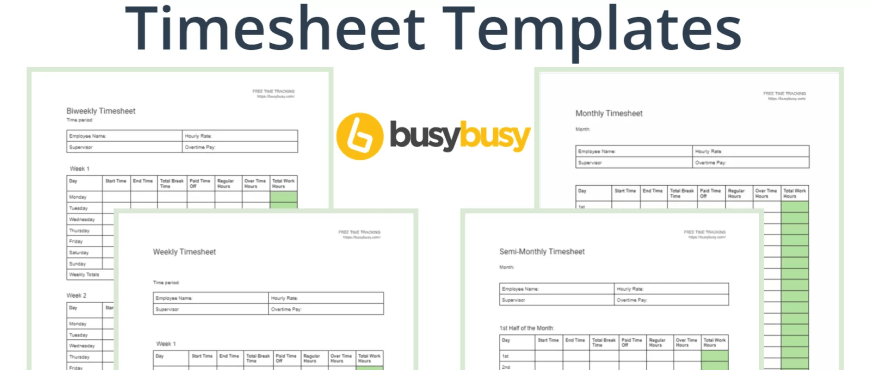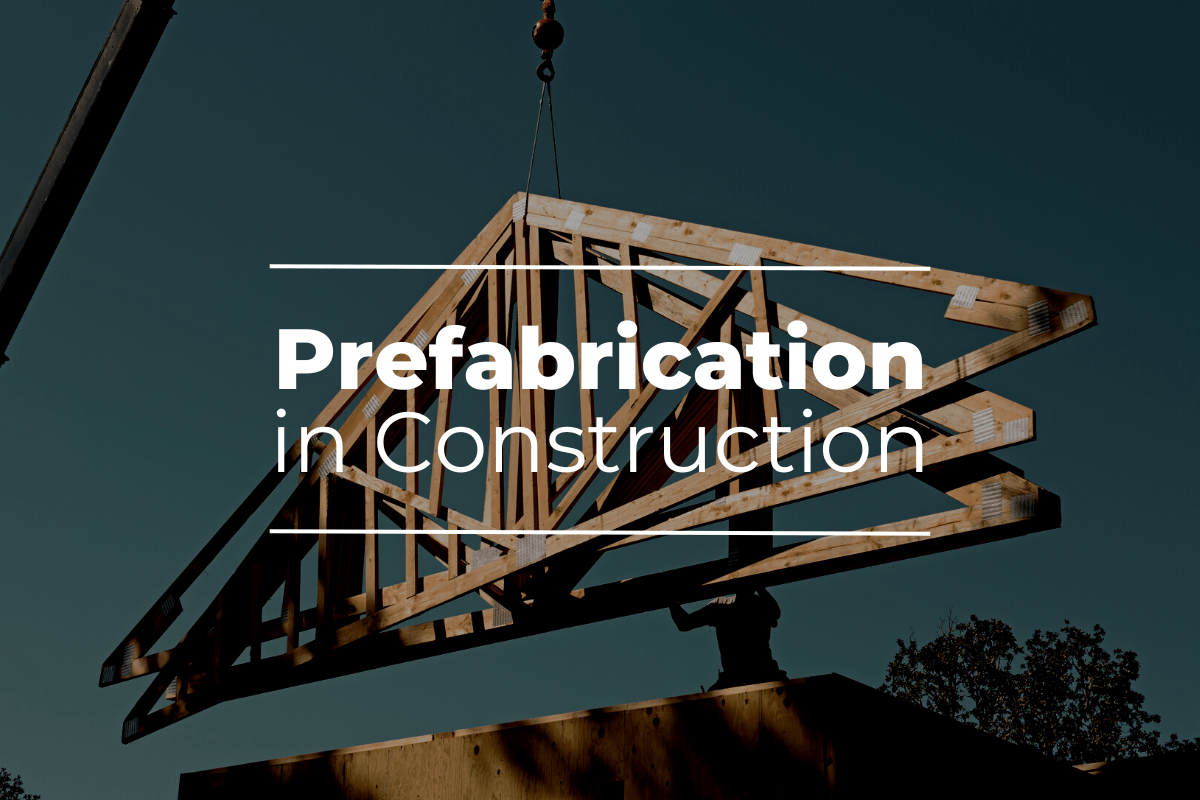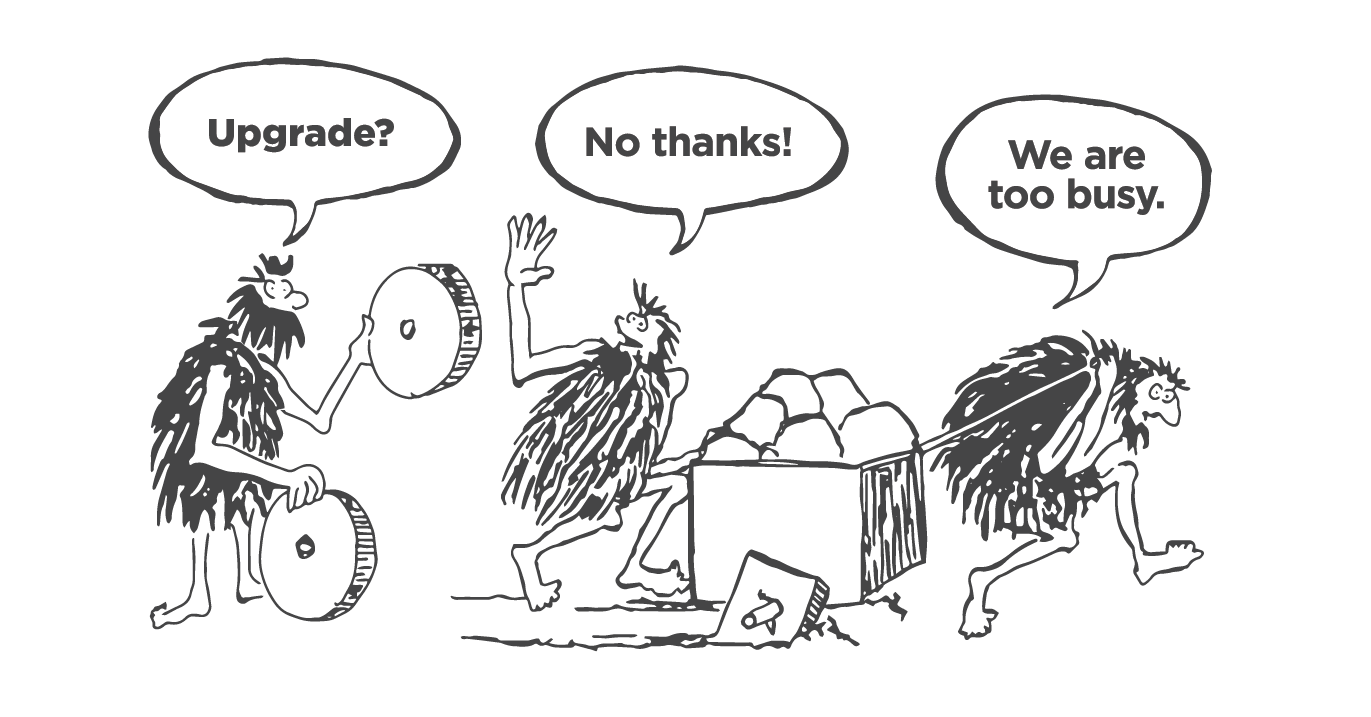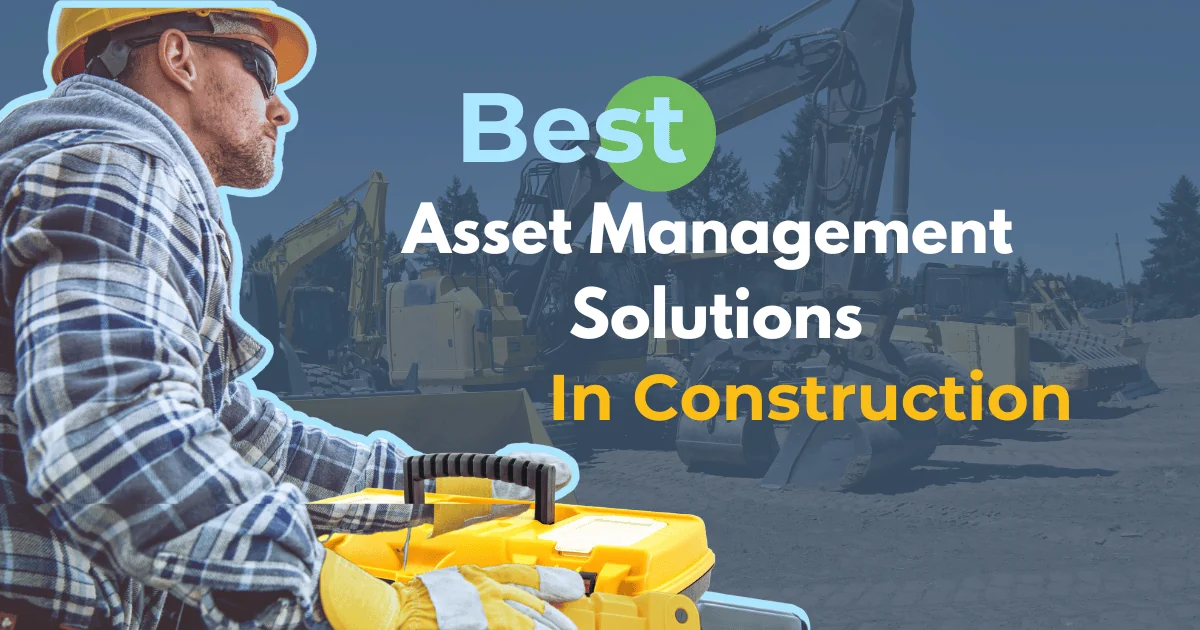
In construction, staying ahead is crucial. As the year continues, the importance of efficient asset management has never been more pronounced. From tracking tools to managing equipment, the right software can make or break your project’s success. Let’s dive into the cutting-edge solutions that are transforming the construction industry and explore how they can elevate your asset management game.
Why Asset Management Matters More Than Ever
Gone are the days of manual spreadsheets and guesswork. Today’s construction sites are embracing digital solutions that offer real-time insights and streamlined processes. These advanced systems are not just about keeping tabs on your assets; they’re about optimizing their use, reducing downtime, and ultimately boosting your bottom line.
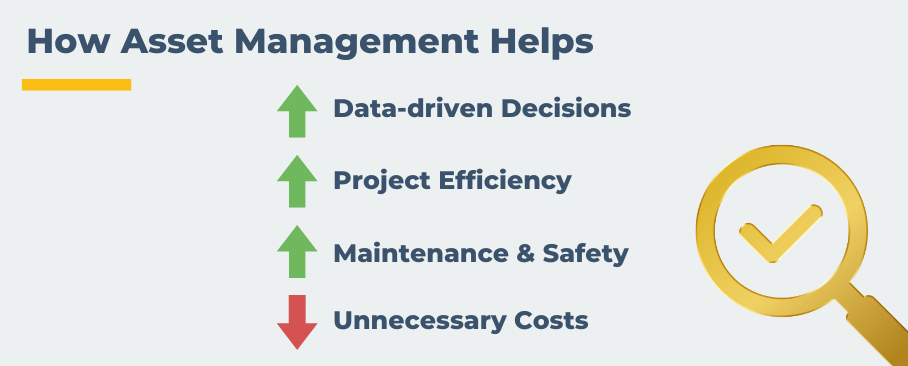
Improved Efficiency: When you know exactly where your assets are and their condition, you can allocate resources more effectively, reducing delays and improving project timelines.
Cost Reduction: By tracking usage and maintenance, you can prevent unnecessary rentals, reduce theft, and extend the lifespan of your equipment.
Enhanced Safety: Regular tracking and maintenance checks ensure that all equipment meets safety standards, reducing the risk of accidents on-site.
Better Decision Making: With comprehensive data at your fingertips, you can make informed decisions about equipment purchases, rentals, and project bids.
Top Construction Asset Management Solutions for 2024
➤Tool Management
Align Technologies: Tool Management & Asset Tracking
Align’s innovative tool management system is designed for businesses looking for enterprise-level control:
- Multi-Site Visibility: Reflect your organization’s structure and gain enterprise-wide visibility with data rollup and asset tracking from multiple locations.
- Standardized Lists: Boost consistency by creating standardized lists for kits, pick tickets, and purchase orders.
- Service Forecasting: Improve safety and extend tool life with automated service notifications and maintenance records.
Milwaukee ONE-KEY™: Advanced Tool Tracking and Security
Milwaukee’s ONE-KEY™ system stands out for its innovative approach to tool tracking:
- Large Bluetooth tracking network for locating missing tools
- Geofencing capabilities for asset control
- Ability to lock down stolen smart tools remotely
- Integration with Milwaukee’s line of smart tools for enhanced functionality
For companies heavily invested in Milwaukee tools or those prioritizing theft prevention, ONE-KEY™ offers unique advantages in the asset management space.
ToolHound: Specialized Inventory Management
ToolHound has been a staple in the construction industry for decades, focusing specifically on tool and equipment inventory management:
- Barcode and RFID tracking options
- Detailed reporting on tool usage and availability
- Integration with purchasing systems for streamlined reordering
- Customizable checkout procedures for enhanced accountability
ToolHound’s specialization in inventory management makes it a strong choice for companies looking to optimize their tool crib operations and reduce losses.
➤ Equipment Management
busybusy: Simplifying Equipment Tracking
busybusy has emerged as a frontrunner in the construction equipment tracking arena. Its GPS-enabled app is designed with the unique needs of construction companies in mind, offering a user-friendly interface that belies its powerful capabilities.
Key Features:
- Track equipment across multiple job sites and see who is operating.
- Detailed reports on operator efficiency and machine utilization
- Track machine hours to compare working hours to idle hours.
- Easy-to-access list of all equipment and its associated information.
Align Technologies: Comprehensive Equipment Management
Align Technologies offers robust equipment management software that goes beyond simple tracking. It’s designed to help construction companies manage their entire asset lifecycle, from acquisition to maintenance and eventual replacement.
Key Features:
- Detailed equipment inventory tracking
- Maintenance scheduling and automated service notifications
- Integration with GPS providers for precise location tracking
- Customizable dashboards for performance overview
- Comprehensive reporting capabilities for data-driven decision making
Raken: Comprehensive Equipment Management
Raken has established itself as a frontrunner in construction management software, and its equipment management features are particularly noteworthy.
Key Features:
- Easy-to-use mobile app for field teams to log equipment usage
- Real-time visibility across multiple projects
- Ability to track both owned and rented equipment
- Maintenance scheduling and cost tracking
Fleetio: Streamlined Fleet and Equipment Tracking
While Fleetio is known for its fleet management capabilities, it’s also a powerful tool for construction equipment management.
Key Features:
- Customizable inspection forms for equipment safety checks
- Fuel tracking and efficiency metrics
- Maintenance workflow management
- Integration with fuel cards and GPS systems
Fleetio’s focus on data analytics and preventative maintenance makes it ideal for companies with large equipment fleets looking to optimize their operations.
Implementing Asset Management Solutions: Best Practices
Choosing the right asset management solution is only half the battle. To truly reap the benefits, you need to implement it effectively. Here are some best practices to consider:
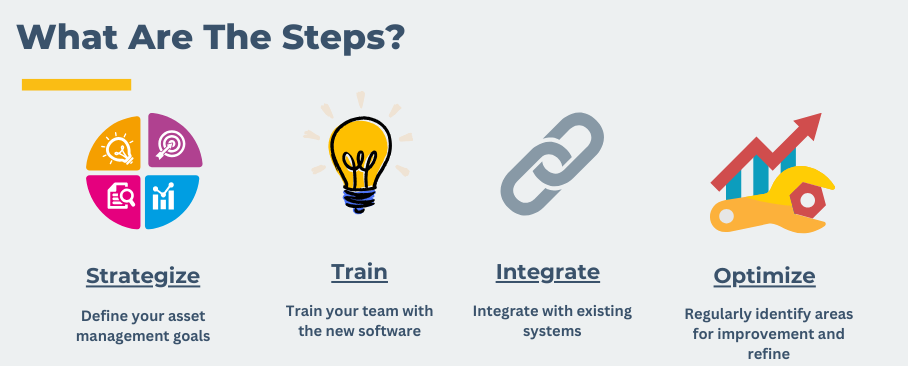
Start with a Clear Strategy
Before diving into implementation, define your goals. What specific problems are you trying to solve? Are you looking to reduce equipment downtime, improve utilization rates, or enhance maintenance schedules? Having clear objectives will guide your implementation process and help you measure success.
Ensure Proper Training
The best software in the world is useless if your team doesn’t know how to use it. Invest in comprehensive training for all users, from field workers to office staff. Many software providers offer training resources – take advantage of these to ensure smooth adoption.
Integrate with Existing Systems
For maximum efficiency, your new asset management solution should integrate seamlessly with your existing systems, such as accounting software or project management tools. This integration eliminates data silos and provides a more comprehensive view of your operations.
Regularly Review and Optimize
Asset management is not a “set it and forget it” solution. Regularly review your processes and the data generated by your software. Look for trends, identify areas for improvement, and continually refine your approach to maximize the benefits of your chosen solution.
Embracing the Future of Construction Asset Management
The construction industry is on the cusp of a digital revolution, and asset management is at the forefront of this transformation. By embracing these cutting-edge solutions and staying ahead of emerging trends, construction companies can significantly enhance their efficiency, reduce costs, and gain a competitive edge in an ever-evolving market.
As you consider implementing or upgrading your asset management system, remember that the goal is not just to keep track of your tools and equipment, but to optimize their use and contribute to the overall success of your projects. The right solution will grow with your business, adapt to new technologies, and continue to deliver value for years to come.








